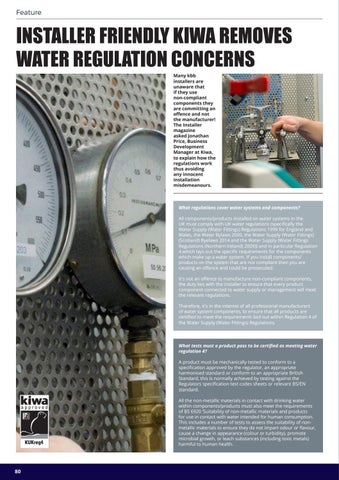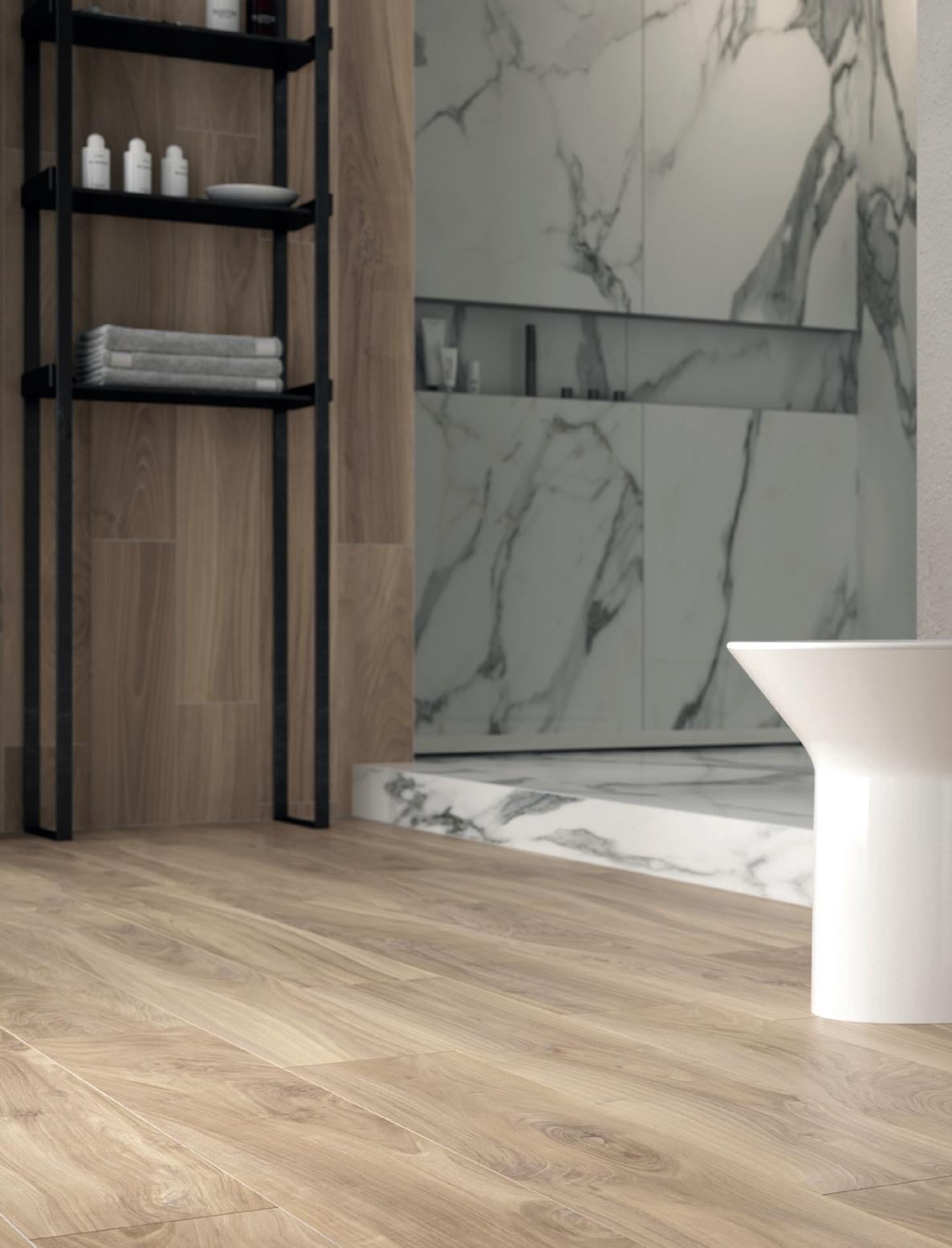Feature
INSTALLER FRIENDLY KIWA REMOVES WATER REGULATION CONCERNS Many kbb installers are unaware that if they use non-compliant components they are committing an offence and not the manufacturer! The Installer magazine asked Jonathan Price, Business Development Manager at Kiwa, to explain how the regulations work thus avoiding any innocent installation misdemeanours.
What regulations cover water systems and components? All components/products installed on water systems in the UK must comply with UK water regulations (specifically the Water Supply (Water Fittings) Regulations 1999 for England and Wales, the Water Bylaws 2000, the Water Supply (Water Fittings) (Scotland) Byelaws 2014 and the Water Supply (Water Fittings Regulations (Northern Ireland) 2009)) and in particular Regulation 4 which lays out the specific requirements for the components which make up a water system. If you install components/ products on the system that are not compliant then you are causing an offence and could be prosecuted. It's not an offence to manufacture non-compliant components, the duty lies with the installer to ensure that every product component connected to water supply or management will meet the relevant regulations. Therefore, it's in the interest of all professional manufacturers of water system components, to ensure that all products are certified to meet the requirements laid out within Regulation 4 of the Water Supply (Water Fittings) Regulations.
What tests must a product pass to be certified as meeting water regulation 4? A product must be mechanically tested to conform to a specification approved by the regulator, an appropriate harmonised standard or conform to an appropriate British Standard, this is normally achieved by testing against the Regulators specification test codes sheets or relevant BS/EN standard. All the non-metallic materials in contact with drinking water within components/products must also meet the requirements of BS 6920 ‘Suitability of non-metallic materials and products for use in contact with water intended for human consumption. This includes a number of tests to assess the suitability of nonmetallic materials to ensure they do not impart odour or flavour, cause a change in appearance (colour or turbidity), promote microbial growth, or leach substances (including toxic metals) harmful to human health.
80






























